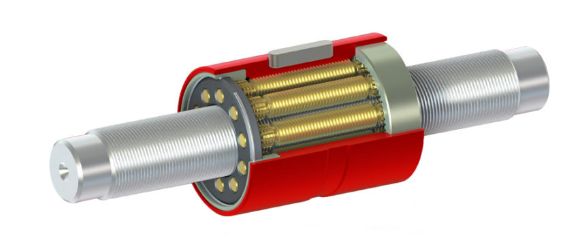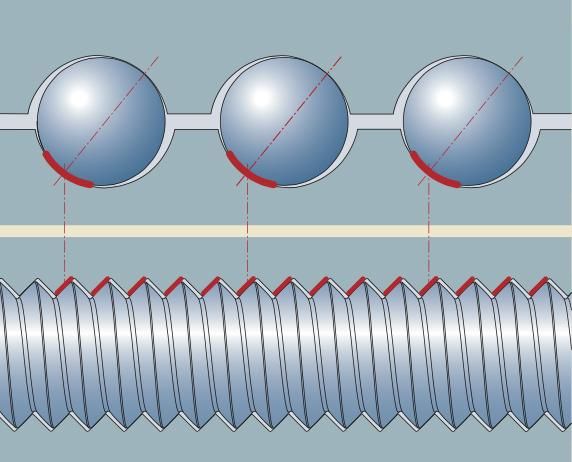Electromechanical actuators come in many varieties, with common drive mechanisms being lead screws, ball screws, and roller screws. When a designer or user wants to transition from hydraulics or pneumatics to electromechanical motion, roller screw actuators are usually the best choice. They provide comparable performance characteristics to hydraulics (high force) and pneumatics (high speed), in a less complex system.
A roller screw replaces recirculating balls with threaded rollers.The nut has an internal thread that matches the screw thread. The rollers are arranged in a planetary configuration and both both spin on their axes and orbit around the nut.The ends of the rollers are toothed to mesh with geared rings at each end of the nut, ensuring that the rollers remain in perfect alignment, parallel to the axis of the screw and nut.
A roller screw is a type of screw drive that replaces the recirculating balls with threaded rollers. The ends of the rollers are toothed to mesh with geared rings at each end of the nut. The rollers both spin on their axes and orbit around the nut, in a planetary configuration. (This is why roller screws are also referred to as planetary roller screws.)
The geometry of a roller screw provides significantly more contact points than are possible with a ball screw. This means that roller screws typically have higher dynamic load capacities and rigidity than similarly sized ball screws. And the fine threads (pitch) provide a higher mechanical advantage, meaning that less input torque is required for a given load.
The key design advantage of roller screws (bottom) over ball screws (top) is the ability to contain more contact points in the same space.
Because their load-carrying rollers don’t contact each other, roller screws can typically travel at higher speeds than ball screws, which have to deal with the forces and heat generated by the balls colliding with each other and with the recirculation end caps.
Inverted roller screws
The inverted design works on the same principle as a standard roller screw, but the nut is essentially turned inside-out. Hence, the term “inverted roller screw.” This means that the rollers rotate around the screw (instead of the nut), and the screw is threaded only in the area where the rollers orbit. The nut, therefore, becomes the length-determining mechanism, so it is typically much longer than the nut on a standard roller screw. Either the screw or the nut can be used for the push rod, but most actuator applications use the screw for this purpose.
Manufacturing of an inverted roller screw presents the challenge of creating very precise internal threads for the nut over a relatively long length, which means a combination of machining methods is used. The result is that the threads are softer, and therefore, the load ratings of inverted roller screws are lower than for standard roller screws. But inverted screws have the benefit of being much more compact.
Post time: Oct-27-2023








